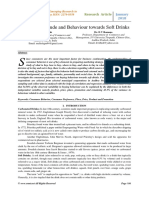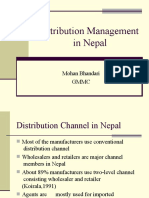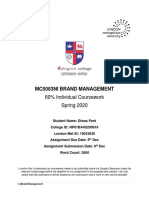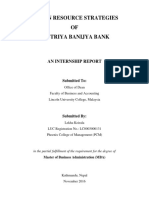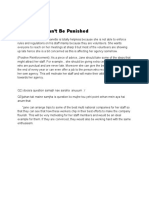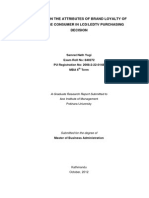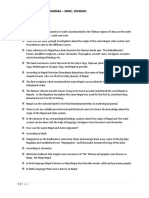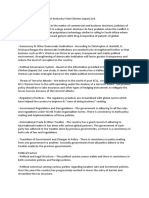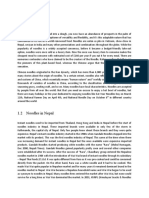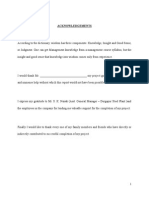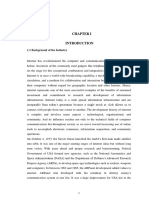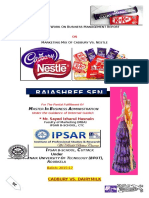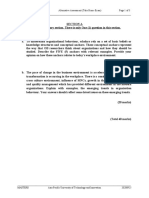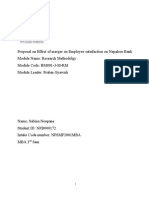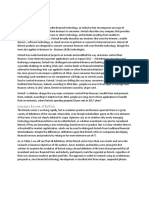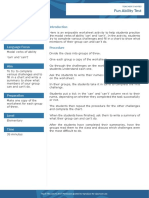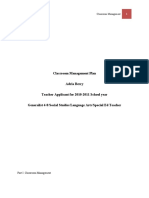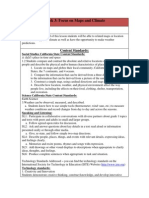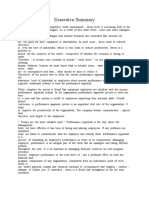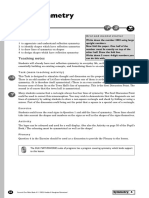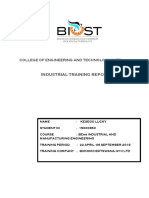Table of Contents
1. Introduction.......................................................................................................................................1
1.2. Background of Chaudhary Group...........................................................................................1
2. Organizational Behavior Theories...................................................................................................2
2.1. Organizational Behavior Concept.................................................................................................3
3. The relationship Between Organizational Structure and Culture.................................................4
3.3. Centralization & Decentralization and Power Culture...............................................................4
4. Influencing Factors of Individual Behavior at Work......................................................................4
5. Organizational Theories Underpin Practices of the Management.................................................5
6. Different Types of Leadership..........................................................................................................6
6.1. Democratic Leadership.............................................................................................................6
6.2. Autocratic Leadership...............................................................................................................6
6.3. Laissez-Fair Leadership............................................................................................................6
6.4. Transactional Leadership.........................................................................................................7
6.5. Transformational Leadership...................................................................................................7
6.6. Bureaucratic Leadership...........................................................................................................7
7. Different Approach Used by Management......................................................................................7
8. Impact of Leadership on Employee Motivation..............................................................................8
References................................................................................................................................................10
i
� 1. Introduction
Buildings or sets of equipment are not organizations. Organizations are, indeed, entities that
collaborate to reach common aims. The research of organizational behavior (OB) and its
affiliated topics allows one to understand in organizational environments what people say,
experience and do. This expertise helps anticipate, comprehend and monitor corporate activities
for management and, realistically, all workers.
According to[ CITATION RIC95 \l 1033 ] it is the study of human actions, the interface between
human behavior and the organization itself.
1.2. Background of Chaudhary Group
Chaudhary Group is the most reputed company of Nepal. The first step towards establishing the
business empire goes to late Bhuramull Chaudhary some 135 years ago. The Chaudhary Group
has diversified investments across diverse industries and is one of the largest private companies
in the Kingdom of Nepal. The business is efficiently run by a team of highly trained and
seasoned practitioners.
One of the biggest corporate houses in Nepal is the Chaudhary Group (CG). Over the past 137
years, CG has increased in size and power and is now a conglomerate of more than 40 firms.
While working on its goal of becoming a global development business, the company has
invested much time and resources looking into its fundamental principles and convictions.
With a presence in sectors such as food and beverages, clothing, health care, education, tobacco,
real state (housing development), financial services, steel, cars, hydro and electric power, and
hospitality tourism, the CG covers all facets of public life. CG is also the first Nepalese
corporation to have a growing presence in the competitive FMCG markets of South Asia. It has
made a popular presence in South Asia's highly competitive food and beverages industry as the
first Nepali company to have a distribution network across the subcontinent. Its food and
beverage goods have crossed boundaries to become a staple in South Asian cities with ISO 9002
certification.[ CITATION Sat12 \l 1033 ]
1
� 2. Organizational Behavior Theories
The list of organizational behavior theories as follow:
a) Complexity Theory: An organizational behavior description of the philosophy of
complexity in company environments notes that businesses and teams in the workplace
are more fluid than rigid. They operate as complex environments instead of operating like
a computer, where each component impacts and is dependent on the other parts in order
to be efficient.
In this philosophy, we will understand the relationship of each team member with each
other as well as with the team as a whole while attempting to improve success in a team.
With new initiatives, injuries, the introduction of new team members, new strategies and
more, the level of participation and position of our team members will change over time.
The philosophy of uncertainty leaves space for a certain amount of creative versatility
and transition rather than having static ideas about how the team would work indefinitely.
b) French Raven's Five Base of Power: The concept of influence in organizational activity
is often more dependent on partnerships than names. There are five known centers of
power in France and Raven's five power bases that might help us find out who has the
most impact in our organization:
Legitimate
Reward
Expert
Referent
Coercive
c) Hybrid Organization Theory: The idea of hybrid organizations claims that individuals
no longer have to choose between becoming an altruistic nonprofit or a for-profit
corporation. An enterprise can be both altruistic and make a profit in the corporate
activity concept of a mixed corporation, as can teams and individuals within an entity.
With firms like Toms, Sevenly and Pura Vida leading the way, this paradigm for
organizational growth and behavior is becoming more popular.
2
� d) Informal Organizational Theory: Among all the organizational theories, the informal
theory is the one that best acknowledges that within formal group processes there are
always secret mechanisms. The partnerships and associations formed between individuals
in the organization are these informal organizations.
e) Resource Dependence Theory: Some product-based companies are well familiar with
the idea of resource dependency. This theory claims that the existence of outside capital
also affects efficiency. For example, in order to produce its toy cars, the toy manufacturer
relies on toy wheels from China. In support careers, such as when quality internet signals
decide whether or not a life coach will reach clients on Zoom, this can also be a
challenge.[ CITATION Ann191 \l 1033 ]
2.1. Organizational Behavior Concept
Chaudhary Group embed 'Reward' one of a power of French Raven's Five Base of Power. In
their desire to praise others for doing what they are meant to do, people who have this type of
reward earn it. It's not necessarily a cash gain. It also appears in the form of favorable affirmation
or cheering on others.
The "token of appreciation for employees" scheme was undertaken to promote the organization's
culture guided by excellence. Rewarding excellence is a mandatory action by management, who
claims that such a decision will go a long way towards raising a sense of competition and
challenging itself. It serves as a massive motivational force that can strengthen job performance.
The awards were focused on core achievement components, notable activities and exceptional
programs. Any examples of worthwhile programs of note includes- Specific ventures performed,
A company's special benefit Crisis management, by programs rather than specifically relevant to
his mission, Problem solving skill and variables such as dedication and integrity.
3
� 3. The relationship Between Organizational Structure and
Culture
Organizational culture describes the organizational framework of an entity in some respects, but
the structure also partly defines an organization's culture. It may also be argued that the structure
is a mechanism for the introduction of the culture, while the culture decides how to structure the
organization. So, no matter how large an enterprise is, once the society continues to disintegrate,
it's only a matter of time before it still follows the system.
3.1. Work Specialization and Role Culture: It applies to the degree to which activities are
subdivided into different jobs within the company. The entire job is subdivided into different
stages in the task specialization and each step must be done independently by human, which is
exactly the same as role culture. The culture of the job has the advantage of specialization.
Employees concentrate on their unique task as allocated to them by their job description and this
can improve the company's productivity.
3.2. Matrix Structure and Task Culture: An organization with a Matrix structure involves
teams of individuals generated from separate parts of the enterprise (task culture). For the
purposes of a single project, these teams will be formed and will be headed by a project manager.
Sometimes, only for the length of the project can the team function and matrix systems are
typically deployed to produce new goods and services.
3.3. Centralization & Decentralization and Power Culture: The main factor is influence
inside a power society. Power cultures are typically located within an entity of small to medium
scale. In the organization of the power culture, centralized decision making is located. The
individual likes control and the force behind it. It is assumed that organizations that have a high
degree of delegation of authority are autonomous.[ CITATION UKE172 \l 1033 ]
4. Influencing Factors of Individual Behavior at Work
i. Age: The most notable of the personal variables affecting actions is the age of an
individual. Generally speaking, the level of excitement for work can diminish as an
employee grows older. This occurs either because the worker is saturated or because
4
� physical activity is lacking. It is for this cause, that youths are often favored for such
positions like those of sales reps.
ii. Values: In the workplace, an individual's beliefs affect his behavior. For instance, if
the value structure of an employee advises him that he does not strike work to express
his complaints to the boss, he won't engage in strikes. Similarly, an employee who
needs to be fair about his workplace won't be taking his time away.
iii. Attitudes: Attitude is the attitude of an employee regarding his job, his supervisors
and fellow-employees in the sense of the workplace. Attitudes may be pessimistic or
positive. An employee with a good outlook enjoys his work, completes his superior's
delegated duties, and establishes friendly relations with fellow workers.
In the other hand, workers with a pessimistic mindset are insincere in their
employment. With their bosses and fellow-workers, they sometimes quarrel.
iv. Perception: Perception is the interpretation or understanding process. Different
persons interpret a particular situation differently. If a person's intuition is right, he or
his company will benefit. He/his company fails if it turns out to be wrong. A
company needs individuals who are in a position to accurately understand items. An
individual without the ability to make right perceptions must listen to others who
have such ability. Thus, the understanding of people profoundly affects their actions.
[ CITATION Accnd \l 1033 ]
5. Organizational Theories Underpin Practices of the
Management
In certain areas of a working enterprise, organizational philosophy and management theory are
used. The principle is pursued by many individuals to become better at their work or more
effective in life. If practically executed, organizational philosophy can be very useful since it can
influence the organisation's internal efficiency. It studies the interaction of different organisations
with the world in which they work. Long ago, organizational structure, philosophy, leadership
styles, management methods and motivational theories were developed, but they are continually
5
�changing to help managers understand the business climate and conduct business practices to
meet the organization's goals.
The philosophy of management is a set of numerous principles, inventions and policies
developed to assist executives in carrying out day-to-day operations. The administration theory
allows administrators to consider and understand the association's priorities; it helps them to plan
work, taking into account the overall objective of meeting these goals in the best and skillful
way; it helps them to understand what inspires people and teaches them how best practices can
be achieved.
6. Different Types of Leadership
All leaders should not have the same mindset or the same outlook. Their style does vary. The
style of leadership varies with the sort of people with which the leader communicates and deals.
A type of perfect/standard leadership is one that makes a leader get the most out of the people
that follow him. Some forms of leadership are listed below:
6.1. Democratic Leadership: Democratic leadership is just what it looks like—based on each
team member's feedback, the leader makes choices. While he or she is making the final
decision, every employee has an equal say in the progress of a project.
Democratic leadership is one of the most powerful forms of leadership because it encourages
lower-level workers to exercise power in potential roles they may occupy that they will need
to use wisely.
6.2. Autocratic Leadership: The opposite to democratic leadership is autocratic leadership. The
leader takes choices in this leadership style, without seeking input from someone who
reports to them. Employees are not prior to a course considered or consulted and are required
to conform with the determination at the time and rate stipulated by the boss.
6.3. Laissez-Fair Leadership: The French word "laissez faire" practically translates to "let them
do," and leaders who accept it owe their workers virtually all power. While laissez-faire
leadership can encourage workers by empowering them to function as they want, it can
6
� restrict their development and ignore vital opportunities for business growth. It's also
important that this form of leadership is kept in place.
6.4. Transactional Leadership: Transactional leaders are pretty widespread today. For just the
job they do, these managers compensate their workers. A typical example of transaction
leadership is a marketing staff that earns a planned incentive to help produce a certain
amount of leads by the end of the year.
This type of leadership will use reward systems to encourage workers, but they can conform
with the priorities of the organization and are used in addition to unplanned expressions of
gratitude.
6.5. Transformational Leadership: Transformational leadership is often "transforming" the
conventions of the organization and changing them. Employees may have a basic series of
duties and priorities that they accomplish every week or month, but they are continually
forced beyond their comfort zone by the boss.
6.6. Bureaucratic Leadership: Bureaucratic rulers go into the books. Unlike autocratic
leadership, this type of leadership might listen and accept the input of workers, but the leader
prefers to ignore the input of an employee if it clashes with company policies or previous
procedures.[ CITATION Bra20 \l 1033 ]
7. Different Approach Used by Management
The various approaches to management analysis have been listed below:
a. The empirical or case approach: In this approach, with the aid of instances, we strive to
explain management concepts. We further describe the circumstances in which, by
adopting this strategy, companies have either succeeded or failed.
b. The interpersonal behavior approach: This approach is focused on the psychology of
personalities and emphasizes on human relations.
c. The group behavior approach: Sociology and social science are based on this approach. It
emphasizes the actions of persons in communities.
d. The cooperative social systems approach: It encourages a cooperation structure that uses
both organizational and group behavioral elements.
7
� e. The sociotechnical systems approach: It recognizes the impact on personal attitudes and
collective behavior of technological structures. This approach focuses on areas such as
manufacturing, office operations, etc., which include close relationships between
technological systems and the people involved.
f. The decision theory approach: This approach reflects on the decision-making process and
on the persons engaged in it.
g. The systems approach: It finds entities, when they communicate with the external world,
to be open structures. It understands the significance of the inter-relationship between
planning, coordination and regulation.
h. The contingency or situational approach: The key principle in this strategy is that for all
cases, there is no hard and fast law. Managerial activity is based on factors. The use of
different approaches can entail different circumstances.[ CITATION Sep161 \l 1033 ]
8. Impact of Leadership on Employee Motivation
Motivation has the ability not only to energize people by moving them in the right direction, but
also by fulfilling their fundamental human needs of self-esteem, belonging, recognition, self-
directedness and the capacity to live one's values. Motivation was shown to be associated with
productivity of workers.[ CITATION Ali16 \l 1033 ]
Autocratic types of leadership (making decisions on their own without consulting staff)
may be advantageous matters of decision-making speed and where executives are
knowledgeable and this in turn makes employees more relaxed and empowered with this
form of leadership.
The democratic model of leadership and its effect on the motivation of workers.
Employees are part of the decision-making process in this strategy and thus feel engaged
and their views are respected.
Laissez-Fair Leadership: he key duties of this style of leadership include trusting
members to make appropriate choices and recruiting skilled personnel. The task of this
style of leadership involves problem solving and self-monitoring, as well as quality goods
and services being created. Laissez-faire leaders are incredibly successful because their
8
� followers are self-directed and their leaders at any stage are not objectively instructed by
them.
Transactional Leadership: When we work for a team of mission-oriented workers, the
transactional management approach is highly successful and there is a simple and
realistic goal at hand. The reward promised would inspire the team to attain the task in
place. For purchase executives, sales is a fantastic field, and so is athletics.
Transformational Leadership: A transformative style in which a leader or boss puts forth
a vision of the future and lays out a concrete plan to fulfill this vision. Both Richard
Branson and Tony Robbins are outstanding examples of transactional personalities who
have the potential to encourage their fans to buy into their great vision.
9
� References
Accounting Learning.Com, n.d.. Personal & Psychological factors Influencing Individual
Behavior in Organization. [Online]
Available at: https://accountlearning.com/personal-psychological-factors-influencing-individual-
behavior-organization/
[Accessed 2 Feburary 2021].
Al-Anazi, A. A. &. M., 2016. The Impact of Leadership Style On Employee's Motivation.
International Journal of Economics and Business Administration, 2(5), pp. 37-44.
Amin, S. H., 2016. Approaches to Management. [Online]
Available at: https://seprianhidayatamin.wordpress.com/2016/04/22/6-approaches-to-
management/
[Accessed 2 Feburary 2021].
Becker, B., 2020. The 8 Most Common Leadership Styles & How to Find Your Own. [Online]
Available at: https://blog.hubspot.com/marketing/leadership-styles
[Accessed 2 Feburary 2021].
Kinsey, A., 2019. Management. What Are Some Theories of Organizational Behavior?. [Online]
Available at: https://bizfluent.com/info-7742116-theories-organizational-behavior.html
[Accessed 2 Feburary 2021].
MOORHEAD, R. W. G. &. G., 1995. Organizational Behaavior, Managing People and
Organization. 5th ed. Boston: Houghton Mifflin.
Rahman, M., 2016. Organisational behaviour – definition and importance. [Online]
Available at: https://howandwhat.net/organisational-behaviour/
[Accessed 2 Feburary 2021].
Subed, S., 2012. Chaudhary Group Report. [Online]
Available at: https://www.scribd.com/doc/97515854/Chaudary-Group-Report
[Accessed 2 Feburary 2021].
10
�UKEssay, 2017. Organizational structures and cultures. [Online]
Available at: https://www.ukessays.com/essays/business/comparing-and-contrasting-different-
organizational-structures-and-cultures-business-essay.php
[Accessed 2 Feburary 2021].
11










